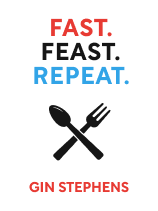

This article is an excerpt from the Shortform book guide to "Fast. Feast. Repeat." by Gin Stephens. Shortform has the world's best summaries and analyses of books you should be reading.
Like this article? Sign up for a free trial here .
What is the best intermittent fasting schedule? How should you time your fasts for maximum effectiveness?
There are many things to factor in when deciding on which fasting schedule suits you best: your lifestyle, work schedule, how long you can go without food, etc. As a starting point, you may want to begin with time-restricted eating (TRE) and move to a more advanced alternate-day fasting (ADF) schedule once your body has acclimated to extended periods of not eating.
Here’s how to time your fasting cycles using the TRE and the ADF approaches.
How to Time Your Fasts
The two most common fasting schedules are time-restricted eating and alternate-day fasting. Each has its own benefits and suitable use cases. Needless to say, the best intermittent fasting schedule is one that works for your body, your health and fitness goals, and your lifestyle.
Time-Restricted Eating (TRE)
This is a popular fasting rhythm wherein you divide each day into a fasting period and a feasting period. For example, you might fast for 18 hours and feast for six (notated as 18:6). Stephens explains that TRE works well for weight maintenance.
During the fasting period, follow Stephens’s clean fasting guidelines. Lipolysis (fat-burning) activates between hours 12 and 16, and increases between hours 18 and 24. During the feasting period, eat according to the principles in the previous section. Spread your eating between one or two meals and a snack or two.
Popular timings include 16:8, 19:5, 20:4, and One Meal a Day (OMAD), which usually features a two- to four-hour eating window. Stephens encourages you to pick a timing that works for your goals: Longer fasts burn more fat while shorter fasts work well for maintenance.
Alternate-Day Fasting (ADF)
Alternate-Day Fasting involves alternating days of fasting and days of eating normally. For instance, a 5:2 ADF rhythm means that you eat normally on five days of the week and fast on two days of the week. According to Stephens, ADF works well for intensive fat loss.
On your fasting days, you can fast completely or eat a 500-calorie meal to keep yourself going. The first option increases fat burning due to the longer fast, while the second still works but is easier. Either way, fast cleanly to ensure that you burn fat, activate autophagy, and lower insulin.
On your eating days, eat slightly more than you need—around 110% of your typical intake—and don’t restrict your eating in any way. Research indicates that “overfeeding” temporarily increases metabolism while restricting your eating can slow down your metabolism.
Popular patterns include 5:2, 4:3, and “True ADF,”which means alternating up-and-down nonstop. A 5:2 pattern is the most flexible since you can adjust the days on which you fast, while the 4:3 pattern and “true ADF” are more rigorous. Whichever pattern you choose, avoid ever having two fasting days in a row—always follow a fasting day with an eating day.

———End of Preview———
Like what you just read? Read the rest of the world's best book summary and analysis of Gin Stephens's "Fast. Feast. Repeat." at Shortform .
Here's what you'll find in our full Fast. Feast. Repeat. summary :
- How intermittent fasting can help you lose weight, feel better, fight disease, and live longer
- An explanation of the cutting-edge science that supports fasting
- How to follow a four-week quickstart program to adapt to this new lifestyle






